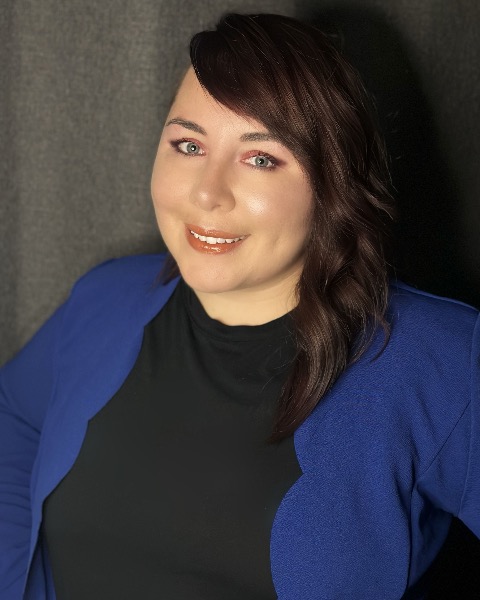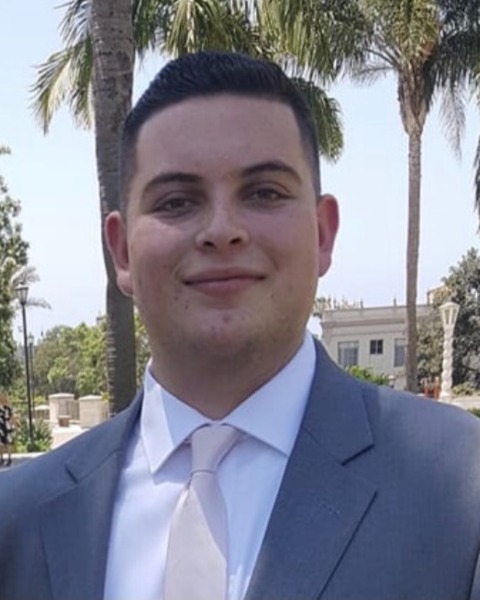Adult Diagnostic (AD)
PP1611 - Normalizing Amsterdam: Characterizing the Modified Amsterdam Inventory for Auditory Disability

Laura Dreisbach, PhD (she/her/hers)
Associate Professor
San Diego State University
San Diego State UniversityFinancial Disclosures: I do not have any relevant financial relationships with anything to disclose.
Non-Financial Disclosures: I do not have any relevant non-financial relationships with anything to disclose.- SN
Sydnee Nelson (she/her/hers)
San Diego State University
San Diego State University
Huntington Beach, CaliforniaFinancial Disclosures: I do not have any relevant financial relationships with anything to disclose.
Non-Financial Disclosures: I do not have any relevant non-financial relationships with anything to disclose. - LA
Lydia Abel (she/her/hers)
San Diego State University
Financial Disclosures: I do not have any relevant financial relationships with anything to disclose.
Non-Financial Disclosures: I do not have any relevant non-financial relationships with anything to disclose. 
Aurianna R. Bonanno, BA (she/her/hers)
Au.D Student
San Diego State University & University of California, San Diego
poway, CaliforniaFinancial Disclosures: I do not have any relevant financial relationships with anything to disclose.
Non-Financial Disclosures: I do not have any relevant non-financial relationships with anything to disclose.
Steven C. Huezo, BA (he/him/his)
Au.D Student
San Diego State University & University of California, San Diego
Norwalk, CaliforniaFinancial Disclosures: I do not have any relevant financial relationships with anything to disclose.
Non-Financial Disclosures: I do not have any relevant non-financial relationships with anything to disclose.- AH
Astkhik Hakobyan
Financial Disclosures: I do not have any relevant financial relationships with anything to disclose.
Non-Financial Disclosures: I do not have any relevant non-financial relationships with anything to disclose.
Lead Presenter(s)
Presenter(s)
Contributor(s)
Summary:
The purpose of this study is to ultimately establish a normative database for the modified Amsterdam Inventory for Auditory Disability (mAIAD) questionnaire by collecting responses from English-speaking individuals without and with auditory system dysfunction. The mAIAD is a reliable and valid measure of overall listening difficulties and in 5 subdomains: speech-intelligibility-in-noise (SIN), speech-intelligibility-in-quiet (SIQ), localization of sound (LOC), recognition of sound (REC), and detection of sound (DET). Responses on the mAIAD for adults with normal hearing who reported hearing difficulties, without and with auditory processing difficulties (APD), and adults with normal hearing with no reported hearing difficulties resulted in significant differences between the groups. These results indicated which individuals should undergo formal APD assessments. However, normative data only exists for a Spanish translation (S-AIADH). To use the mAIAD as it was intended, a fast and efficient tool (28 questions) to determine if further formal hearing evaluations are needed, response expectations need to be established in English-speaking normal-hearing individuals who do not report listening difficulties and in hearing-impaired individuals.
One hundred English-speaking, normal-hearing participants with no reported listening difficulties have been recruited. Normal peripheral and central auditory function were required and multiple subjective and objective tests were administered. In addition to otoscopy, tympanometry, acoustic reflex testing, pure tone audiometry at conventional (0.25-8 kHz) and extended-high (10-16 kHz) frequencies, speech testing in quiet and noise, a few assessments were administered to examine central auditory processing function including, dichotic digits, masking level difference, staggered spondaic words, and gaps-in-noise testing. Distortion product otoacoustic emissions measured at conventional and extended-high frequencies and auditory brainstem responses elicited with clicks and speech stimuli also were used to evaluate auditory function. An extensive case history, the 1-Minute Noise Exposure Screen questionnaire, and the mAIAD were administered. For each question on the mAIAD, participants rate their listening difficulty on a 4-point scale, where a score of 1 represents the most difficulty and a score of 4 equates to no difficulty. The scores for questions in each subdomain are summed to determine difficulty in each listening category and summed across all questions to determine the individual’s overall listening difficulty.
To date, fifty participants (10 males) ranging in age from 18 to 37 (mean 23) years have been completely evaluated. All participants had conventional pure tone thresholds <15 dB HL and at most one abnormal score on the central auditory processing tests administered. The average total mAIAD score was 107, with a range of scores between 88 and 112. The average scores for the SIN, SIQ, LOC, REC, and DET were 3.81, 3.74, 3.8, 3.88, and 3.86, respectively, with a range for all subdomains of 3.43 to 4.00. These scores are comparable to what has been reported for the S-AIADH. With these results from English-proficient individuals with normal auditory function and no reported listening difficulties, a better understanding of the subjective hearing difficulties in individuals with normal hearing and listening difficulties can be assessed using the mAIAD to determine if further audiological testing is warranted.
Learning Objectives:
- Describe the Time-Efficient Modified Amsterdam Inventory for Auditory Disability (mAIAD) as a potential screen for central auditory nervous system deficits.
